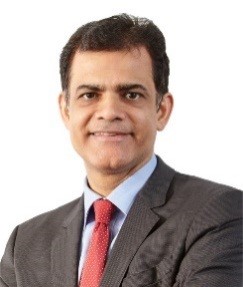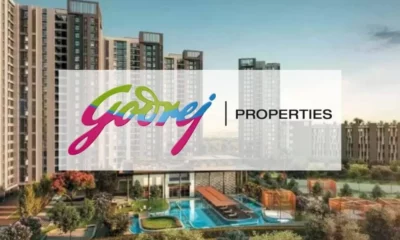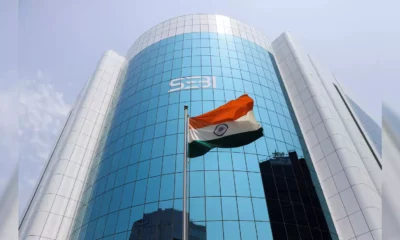Report
The future of Indian retail – crafting unique consumer experiences: JLL


The following is the report Anuj Puri, Chairman & Country head, JLL India
The retail real estate industry in India is gradually maturing and going towards the next wave of evolution. With the rapidly changing aspirations of Indian consumers, influx of international brands – and, importantly, increased competition from e-commerce, there is now a pressing need for physical retailers to evolve. Within this process, shopping outlets will have to provide a more specialized shopping experience.
The Indian Mall Arrives
Let’s start from the beginning. The first Indian malls started springing up in the 1990s, and from then on began more or less taking over the retail landscape. These shopping malls were suburban, lacked adequate parking facilities, and had a standard line-up of mass arcade chain stores and food courts featuring all the usual suspects. Until then, department stores and high streets were the main shopping attraction and provided consumers with restricted options.
With the liberalisation and privatisation of the economy, big international brands made their way to India and the paradigm shift that followed naturally led to the emergence of shopping malls. The mall culture in India had its heyday through the 2000s and became the symbol of Indian consumerism.
Interestingly, the average global lifespan of a retail mall design is about seven years, and at the rate e-commerce is growing, this lifespan appears to be shrinking. In other words, shopping malls built before 2004 will in all likelihood not provide the amenities, shopping environment and brands that today’s consumers are seeking. Today’s top-performing shopping malls are mixed-use affairs with social entertainment possibilities that provide unique appeal along with a certain depth in shopping experience.
It is its adroitness in anticipating changing consumer needs and adapting accordingly that makes malls successful today. Some of the most innovative existing mall developments have integrated public transit facilities, an aspirational mix of global and domestic brands and local stores as well as multi-purpose spaces.
Today’s consumers are seeking a shopping experience that makes them comfortable, inspires them to stay longer and, more essentially, persuades them to return. This has led to a constant effort by Indian mall operators to provide the requisite specialized shopping experience. Today’s most successful malls are perpetually striving to become prominent, iconic ‘shoppertainment’ locations.
The Rising Importance Of F&B And Entertainment
With growing competition from online retailing, F&B and entertainment are their main allies in achieving this. F&B and recreational open spaces are now a vital component of the mall trade and tenant mix. The concept of ‘placemaking’ or destination crafting is all about creating an environment that gives mall customers a memorable experience which they want to experience again and again. This philosophy gives rise to a larger process which includes almost every aspect of the mall – from anchor mix to the design of the mall, dining options and the amenities offered.
An integral aspect of this process involves community spaces for featuring of promotional events, parking children while simultaneously giving them something exciting to do, hosting art exhibitions and flea markets, etc. Malls that have given due thought to such spaces are outnumbering other developments in terms of repeat footfalls, and this clearly indicates that customers value an experience that transcends mainline shopping and also addresses their social needs.
What really differentiates malls that have succeeded in the ‘placemaking’ sweepstakes is their size, modern infrastructure that meets today’s retailing demands and their ability to deliver an atmosphere that breeds loyalty and a desire to return. These malls are rewarded with longer stays, repeated visits and consistently positive customer reviews. In order to connect with the customers, these malls have become ‘places’ that provide customers with numerous avenues of relaxation and entertainment apart from letting people shop.
High Streets – Not Far Behind
Today, the concept of ‘placemaking’ is being successfully implemented not only by malls but also high streets. Historically, high streets have served as the social and commercial hubs for Indian communities. However, the influx of organised retail – read malls – and mounting issues such as growing traffic, inadequate parking and overall lack of conveniences have served to diminish the overall experience that high streets are able to provide their customers. Moreover, high streets are now facing a second wave of competition in the form of online shopping.
However, the growing concept of crafting consumer experiences around social spaces has given Indian high streets a new way to attract footfalls. Geographically, high streets tend to be located within walking distance of some residential catchments while being easily accessible from others. By virtue of this fact, high streets can and do attract a variety of customers. By creating special zones where no vehicles are allowed, Indian high streets can now conduct a wide spectrum of activities for visitors to engage socially and be entertained.
Where this concept is being used, high streets have seamlessly evolved into great destinations. For instance, the unique ‘Happy Streets’ concept which is now very popular in Pune allows people to gather on weekend mornings in an entirely reinvented environment on traditional shopping high streets. Community activities, bazaars, cultural events and flea markets define these special days, which can give high streets a brand new flavour and appeal.
To sum up…
Retail is a constantly evolving business. The mall of the future is no longer just a mall, and the traditional high streets are no longer just shopping destinations. The retail experience of the future is a constantly adaptive process which is squarely focused on changing consumer aspirations. The process of change involves everyone from retail centre developer to consumers, from brands to facilities services providers, from the smallest neighbourhood high street to the most impressive shopping mall.
It is an ever-changing and constantly evolving race to stay current on new trends and deliver a new, customized and refreshing experience to people. Those who succeed in doing this will flourish, and those who refuse to or cannot adapt will perish. It is perhaps a harsh reality, but it is also ultimately a logical and justified one – and in the end, it is the customer who is always king.
-



 News3 weeks ago
News3 weeks agoGodrej Properties Sells Rs 3k cr+ Homes of Godrej Zenith, Gurugram, within 3 days
-



 News4 weeks ago
News4 weeks agoRBI’s Status Quo on Key Policy Rates to Help Maintain the Real Estate Growth Momentum, Say Industry Stalwarts
-



 News2 weeks ago
News2 weeks agoNoida’s High-Rise Societies Face Multiple Challenges Despite Rapid Urban Growth
-



 News2 weeks ago
News2 weeks agoOlive Announces Dhruv Kalro as Co-Founder
-



 News3 weeks ago
News3 weeks agoGodrej Properties Sells 5000+ Homes of Rs 9.5 cr in Q4FY24, Bookings up 84% YoY
-



 News3 weeks ago
News3 weeks agoVestian: Domestic Investors Dominate Institutional Investments in Jan-Mar’24
-

 News2 weeks ago
News2 weeks agoIndia to become the fastest-growing silver economy, housing up to 17% of the world’s elderly population by 2050: CBRE Report
-



 News3 weeks ago
News3 weeks agoHRERA Gurugram Rejects Godrej Properties’ Project Extension Application, Account Frozen For Prolonged Non-compliances


















